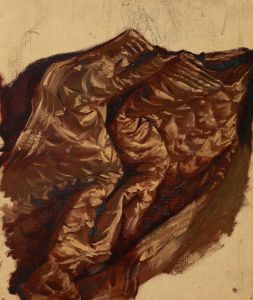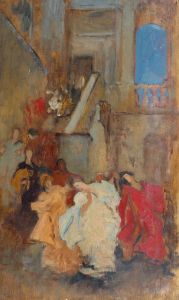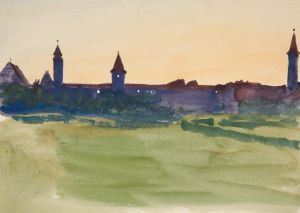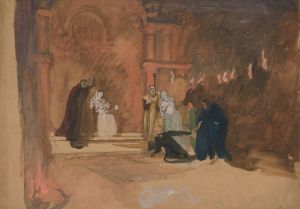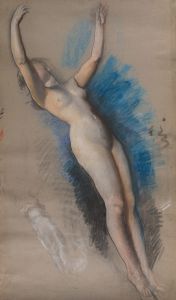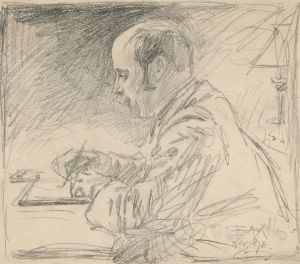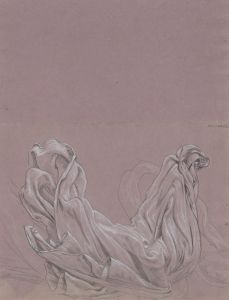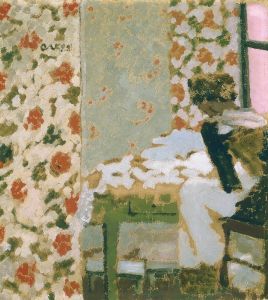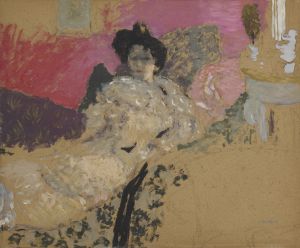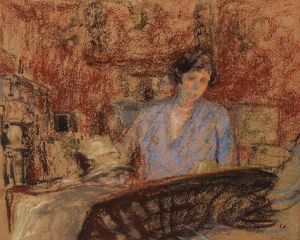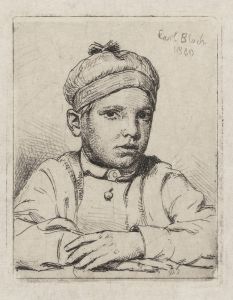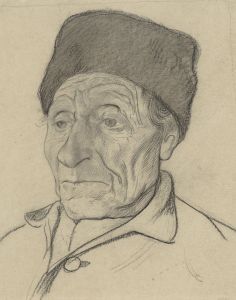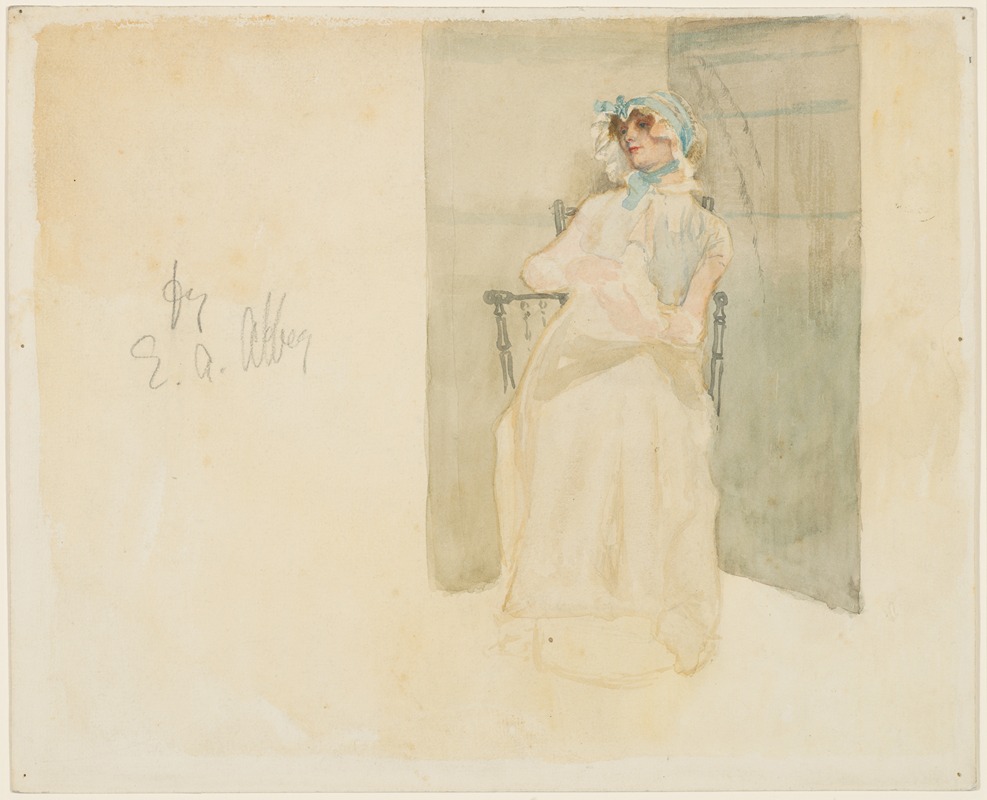
The Hat with the Blue Ribbons
A hand-painted replica of Edwin Austin Abbey’s masterpiece The Hat with the Blue Ribbons, meticulously crafted by professional artists to capture the true essence of the original. Each piece is created with museum-quality canvas and rare mineral pigments, carefully painted by experienced artists with delicate brushstrokes and rich, layered colors to perfectly recreate the texture of the original artwork. Unlike machine-printed reproductions, this hand-painted version brings the painting to life, infused with the artist’s emotions and skill in every stroke. Whether for personal collection or home decoration, it instantly elevates the artistic atmosphere of any space.
"The Hat with the Blue Ribbons" is a painting by the American artist Edwin Austin Abbey, who was known for his illustrations and paintings that often depicted scenes from literature and history. Abbey was born in 1852 in Philadelphia, Pennsylvania, and he gained significant recognition for his work during the late 19th and early 20th centuries. He was a prominent figure in the art world, particularly noted for his contributions to the Golden Age of Illustration.
Edwin Austin Abbey created "The Hat with the Blue Ribbons" in 1895. The painting is an example of Abbey's skill in capturing intricate details and his ability to convey a narrative through his artwork. The piece features a young woman wearing a hat adorned with blue ribbons, which is the central focus of the composition. The woman's attire and the style of the hat suggest a setting in the late 19th century, reflecting the fashion of the time.
Abbey's use of color and light in "The Hat with the Blue Ribbons" is notable. The blue ribbons stand out against the more subdued tones of the woman's clothing and the background, drawing the viewer's eye to the focal point of the painting. The artist's attention to detail is evident in the delicate rendering of the ribbons and the texture of the hat, showcasing his technical proficiency.
Throughout his career, Abbey was influenced by his travels and his exposure to European art. He spent a significant amount of time in England, where he became associated with the Pre-Raphaelite Brotherhood and other contemporary artists. This influence is reflected in his meticulous approach to composition and his interest in historical and literary themes.
In addition to his paintings, Edwin Austin Abbey was also a successful illustrator. He contributed illustrations to various publications, including Harper's Weekly, and he illustrated works by authors such as William Shakespeare and Robert Herrick. His illustrations were highly regarded for their accuracy and their ability to bring literary scenes to life.
Abbey's contributions to the art world were recognized during his lifetime, and he received numerous accolades. He was elected to the National Academy of Design in 1902 and became a member of the Royal Academy of Arts in London in 1898. His work continues to be appreciated for its historical significance and its artistic merit.
"The Hat with the Blue Ribbons" remains an important example of Edwin Austin Abbey's work, showcasing his talent for capturing the essence of his subjects and his dedication to his craft. The painting is a testament to his ability to blend narrative and visual beauty, making it a notable piece in the history of American art.
Abbey passed away in 1911, but his legacy endures through his extensive body of work, which continues to be studied and admired by art enthusiasts and historians alike.





